Perhaps the most important lesson of the SVO
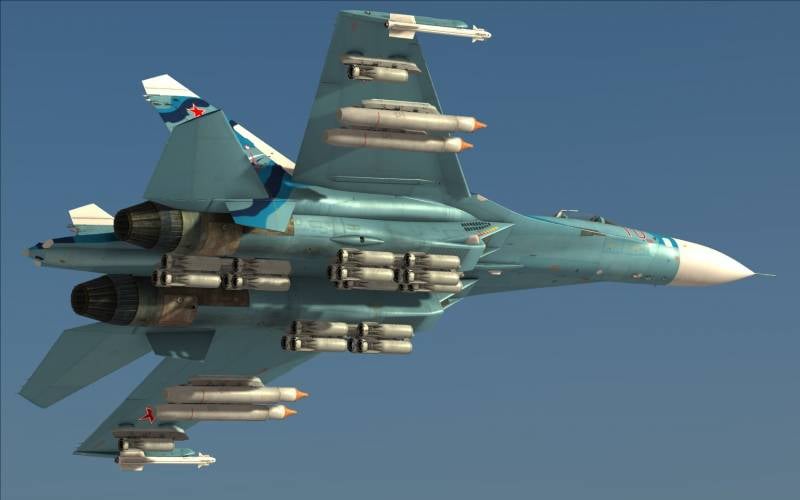
The SVO has been going on for more than a year and a half. And it is not at all surprising that more and more analytical articles devoted to its lessons are appearing in print. But before we start...
Important Interlude
I would like to especially note: everything that I say below does not in any way affect our valiant Aerospace Forces pilots, who carry out combat missions in the Northern Military District zone with honor and at the risk of their lives. And, of course, officers whose duty is to support and directly control the combat activities of the Aerospace Forces.
The questions that I raise in this article should be addressed to much higher authorities and personalities: those who determined the appearance of the modern aerospace forces of the Russian Federation and formed state weapons programs in accordance with this appearance.
Understanding combat experience
Combat experience is obviously invaluable. But any new knowledge is fully useful only when it is correctly generalized and interpreted. Otherwise, the lessons taught by life will not be fully learned, which will only lead us to new mistakes.
Today, both on VO and in other publications, it is easy to find a lot of analytical materials devoted to the experience of the SVO. Pre-war views on the role and tactics of using both relatively old types of weapons, such as Tanks and artillery, as well as the latest ones, like the Lancet attack UAVs. And it’s impossible to count how many opinions are expressed in comments to such articles.
Unfortunately, many analysts and commentators make one very significant mistake: they view the military operations of the Russian Armed Forces against the Ukrainian Armed Forces as a given, a model of modern war and a prototype of future military conflicts.
But is it?
A bit of history
For a long time, one of the most effective means of achieving victory in war is maneuver. This was the case, for example, during the Napoleonic Wars. There is a known case when a certain courtier undertook to praise the French emperor in his presence for his ability to defeat a many times superior enemy.
However, Napoleon stated that he never did such a thing, and that his victories were always built on numerical superiority: if the enemy army was superior in strength to the French, then Napoleon either beat the enemy piecemeal, or achieved local superiority in key points of the position, and won at the expense of this.
Suvorov also won by maneuver. He appeared where he was not expected, and could easily attack superior enemy forces, relying on surprise and onslaught, which did not leave the enemy time to realize his numerical advantage. The First World War was conceived and started by the parties as a war of maneuver, but turned into a positional hell. But what happened next?
The victorious French made the experience of war absolute and prepared their army specifically for positional warfare and defense. They cooked well and seriously, investing in the construction of the Maginot Line. The losing Germans, on the contrary, looked for a way out of the positional deadlock - and found it. The result of the collision of two concepts is well known: the German bet on maneuver won, the united Anglo-French army was completely defeated and lost its combat effectiveness within a month.
The German blitzkrieg was based on maneuver. Create numerical superiority in the breakthrough areas (there was no need to have it along the entire front), introduce mechanized formations into the breakthrough, encircle the enemy, isolating him from supply and reinforcement routes, and then force him to surrender, or destroy him in fruitless attempts to break out rings are the alpha and omega of martial art of the second half of the XNUMXth century.
But in the Northern Military District we don’t see anything like that. Vice versa! Maneuver warfare has given way to positional warfare, and our special operation is painfully reminiscent of history First World War. Here is the initial attempt to wage a war of maneuver: a strike by the Russian Armed Forces, during which over 20% of the area of Ukraine came under our control, but failed to defeat the main forces of the Ukrainian Armed Forces. Here is the subsequent transition to strategic defense. Here are the desperate attempts of the Ukrainian Armed Forces to break into this defense, which resulted in huge losses with minimal progress.
Does this mean that maneuver warfare has become obsolete? Or was the transition to positional warfare the result of mistakes and miscalculations during the construction of the Armed Forces of the Russian Federation? And if so, which ones exactly?
SVO and Desert Storm
If we recall the most recent and comparable military conflict, Desert Storm inevitably comes to mind, during which a coalition of multinational forces (MNF) defeated the Iraqi armed forces. Many parallels can be drawn here.
Firstly, the troops of Saddam Hussein who opposed the MNF had combat experience gained in the Iran-Iraq conflict, which lasted for many years, sometimes became very “hot” but could not give the parties the skills of modern warfare due to the well-known archaism of the armed forces, like Iraq, as well as Iran. The Ukrainian Armed Forces gained similar experience during the fighting in the LPR and DPR.
Secondly, the MNF had quantitative and qualitative superiority in the air. The Russian Aerospace Forces, of course, are much more modest in number than the almost 2 MNF aircraft that took part in Desert Storm, but, undoubtedly, more numerous and newer than the Ukrainian Air Force, despite the fact that Russian pilots are better trained.
Thirdly, Iraq had a highly developed, but to a certain extent outdated air defense system, based on the S-75 and S-125 air defense systems, which in 1990 were clearly no longer at the forefront of technological progress. The same can be said about Ukraine: by 2022, even its newest air defense systems were complexes produced back in Soviet times. While the same S-300 in the Russian Federation was constantly being modernized, there was no money for this in the “Independence”.
And, of course, we should not forget that the RF Armed Forces, starting from 2010, received much more funding, and (at least theoretically) should have been far superior in equipment to the Armed Forces of Ukraine.
In general, many parallels can be drawn between NWO and Desert Storm. But “Desert Storm” ended with a convincing victory for the MNF less than a month and a half from its start, and the Russian Armed Forces, after a year and a half of hostilities, are on the strategic defense. Why?
Disarming strike
Seventeenth January 1991 aviation The MNF, with up to 600 combat aircraft, launched a massive attack on the territory of Kuwait and Iraq.
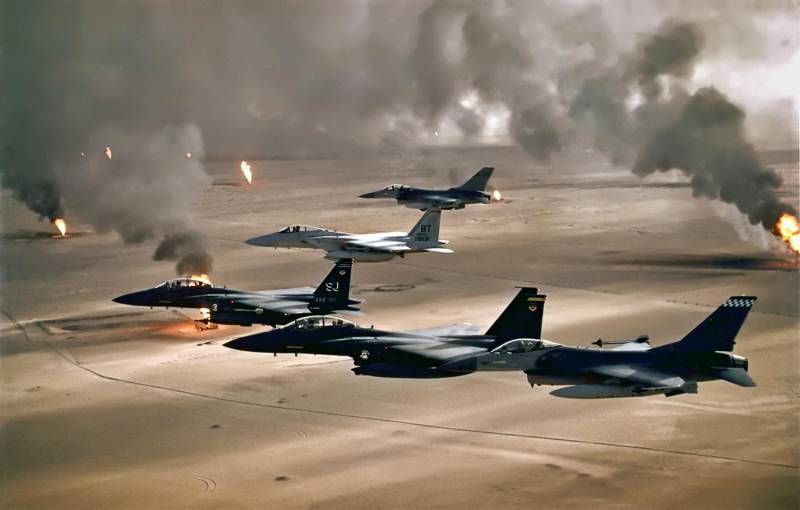
The US Air Force and its allies deployed their full range of capabilities without missing a beat. Where it was justified, helicopters that “sneaked up” at low altitude were used to suppress air defense. The positions of Iraqi air defense systems and radar stations were further reconnaissance by specially formed aviation demonstration groups, which used TALD decoys to simulate missile launches. This, naturally, forced the Iraqi crews to turn on the radar and fight, completely unmasking themselves.
But the Iraqi air defense radars were suppressed by electronic warfare (EW) aircraft, which caused massive interference and used a mass of anti-radar missiles, and the air defense missile systems positions were destroyed by high-precision weapons. The Americans also used Tomahawk cruise missiles, but in relatively small quantities. What is important is that their use was coordinated in time with the actions of the MNF strike aircraft.
The result is that the main Iraqi air defense forces were destroyed during the first strike. First! Undoubtedly, Iraq had a certain number of operational air defense systems until the very end of hostilities; they fought and even shot down MNF aircraft. Iraq's air defense lost, of course, not completely, but still miserably: the Iraqis were unable to protect the ground armed forces and infrastructure from systematic destruction from the air.
Alas, the Russian Aerospace Forces were not only able to destroy, but even seriously failed to scratch the Ukrainian air defense. And to this day they are forced to avoid airspace over the territory controlled by the Ukrainian Armed Forces.
Why?
Question one - intelligence and support
The victory of the MNF air forces over the Iraqi air defense was predetermined long before the start of hostilities. Immediately after Iraq captured Kuwait, the Americans deployed a powerful group of reconnaissance aircraft to the borders of Iraq, which included TR-1, U-2, RC-135 and, of course, the ubiquitous E-3 flying radars. Following them, RF-4C tactical reconnaissance aircraft flew to Saudi Arabia.
And then round-the-clock reconnaissance of the territory of Iraq and Kuwait was organized using all radio equipment available to the Americans and, of course, the US and NATO satellite constellation. During the “research” that lasted almost six months (August 1990 – January 1991), the MNF was able to obtain a fairly clear picture of the deployment of Iraqi armed forces in the conflict zone and, importantly, revealed the location of the air defense.
At the same time, we can say with confidence that in fact the deployment of Iraqi troops was revealed much earlier, because three months before the start of hostilities, the MNF began regular exercises of ground and air forces, working out the details of the upcoming operation. The Americans were not lazy and built imitation Iraqi air defense formations in Kuwait and in Iraq itself at the training grounds at Nellis Air Base (Nevada). Most of the pilots of the US and multinational forces were then “drove” through these training grounds during the Desert Flag exercise.
That is, before the start of hostilities, the pilots of the multinational forces knew exactly who, where and how they would hit, and even practiced this in exercises.
Attention, question. What did the Russian Aerospace Forces do out of all this before the start of the Northern Military District?
In fact, there was more than enough time for preparation, taking into account the fact that it was the Russian side that determined the moment of the start of the SVO. There was also experience that suggested the importance of reconnaissance - the successes of the MNF in Desert Storm were studied and analyzed by our military, and the air operation in Syria hinted at a lot.
Alas, I do not have an answer to the question of how the Russian Aerospace Forces prepared for the SVO - for obvious reasons, the goals, timing and other details of such preparation are not disclosed to the general public. But it’s not difficult to guess - just remember the approximate (exact data is classified) composition of the Russian Aerospace Forces in terms of reconnaissance aviation.
While the Americans used dozens of specialized reconnaissance aircraft for reconnaissance of Iraq, ours could use... what? Four An-30s, the last of which was produced in 1980?
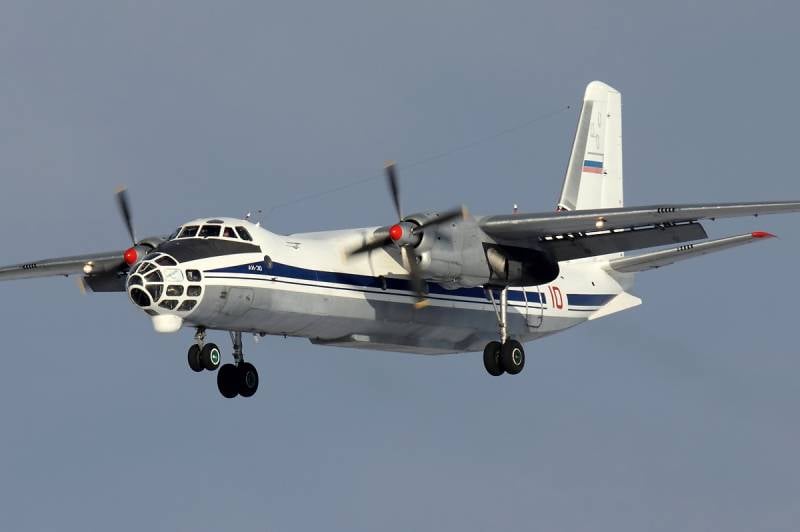
A dozen IL-20s that were produced between 1968 and 1976?
What can be revealed with these flying rarities of a long-gone socialist era?
Well, of course, we also have modern aircraft, such as the Tu-214R. There are either two or as many as four copies, with which even in theory it is impossible to provide round-the-clock reconnaissance...
Things are a little better with airspace control. After all, since 2011, seven A-50Us have been handed over to our troops, but were they all “on the wing” by February 2022? The number of aircraft in the Armed Forces is never equal to the number of aircraft ready to conduct combat operations.
The Americans brought in four dozen AWACS aircraft that were fully operational and modern at that time for Desert Storm. By the way, aircraft of this class with modern radars do a good job of reconnaissance not only of air targets, including low-flying ones, but also of ground targets.
It is quite obvious that ours would destroy the Ukrainian air defense if they had such an opportunity. At the same time, we have quite enough means of fire destruction of air defense systems, whose positions are known. Even without taking into account manned aircraft with their anti-radar missiles, I note that for the same S-300 of the first series, both “Caliber” and “Dagger” are extremely difficult targets.
And again, we can say that the S-300 is an extremely advanced complex for its time. But you need to understand that in principle there is no such thing as an absolute weapon, and we had a great advantage here - the design of the S-300 is well known to us. That is, we could easily adjust the equipment accordingly and select tactics for their destruction.
This suggests an assumption: one of the reasons why the Ukrainian air defense is alive and well is that the space and air reconnaissance means at the disposal of the Aerospace Forces are categorically insufficient to reveal the air defense positions of the Ukrainian Armed Forces.
Question two - covering air operations
It must be said that our opponents (the USA and NATO) have a very rich experience of air warfare in conditions of incomplete, if not completely suppressed, enemy air defense. In this case, the Americans formed special cover groups for attack aircraft. The tasks of such groups included demonstration actions in order to identify the positions of enemy air defense systems, electronic suppression and destruction of the latter. The emphasis was on electronic warfare systems, air target simulators and anti-radar missiles.
At the same time, the United States attached a special role to electronic warfare aircraft: more than 60 such aircraft were deployed in Iraq. We have... several "Choppers".
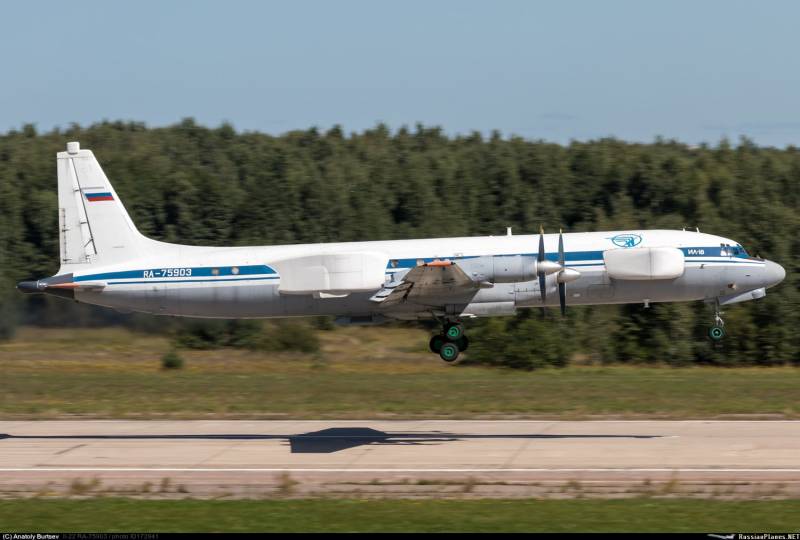
And, again, it’s not that the Russian Federation is not engaged in electronic warfare. But our emphasis was on hanging containers for multifunctional fighters and bombers. This is an important and necessary matter, but still, from the point of view of efficiency, specialization is usually preferable to universality.
It is unlikely that equal effectiveness can be expected from a pilot of a single-seat fighter, or a bomber crew equipped with electronic warfare containers, and a specialized aircraft designed for electronic warfare missions with a crew trained in all its nuances.
Of course, the capabilities of our and American electronic warfare are not disclosed in the wider press, and one can argue until one is hoarse about which is better, but there is a fact - our air forces avoid in every possible way entering the range of enemy air defense systems, while for the US Air Force and NATO this is Although not the norm, it is quite a working situation. Accordingly, it can be assumed that the tactics of demonstration groups, when specially designated aircraft draw fire on themselves, forcing the enemy’s radar to turn on, cannot be used by the Russian Aerospace Forces due to insufficient support from electronic warfare.
About the advantages that defeating enemy air defenses gives the Air Force
As soon as the Americans established themselves at medium and high altitudes above Iraq (low altitudes have always been and will be dangerous due to MZA and MANPADS, which cannot be completely suppressed), they received the following opportunities and advantages.
The first is the ability to effectively destroy enemy air forces in air battles. It must be said that it is extremely difficult to destroy even a significantly inferior air force on the ground: as is known, the enormous power of the MNF air force could not completely paralyze the work of the Iraqi airfield network.
But how much use did the Iraqis have from the surviving airfields and the fighters based on them? American AWACS aircraft spotted Iraqi planes shortly after they took off and intercepted them with enough force to destroy them. While the Iraqis (and later the Yugoslavs) were forced to fight “blindly”, relying only on the standard equipment of their fighters.
In other words, the confrontation in the air has turned into obviously futile battles of individuals against the system. And it often happened that lone individuals realized that they were under attack only at the moment the rocket that overtook them exploded... Yes, even in such conditions, the Iraqis had effective sorties and success in air combat, but we are talking about any kind of long-term and effective resistance I can’t walk in such conditions.
If the Russian Aerospace Forces had a similar level of control over Ukrainian airspace, then the activities of the Ukrainian Armed Forces would quickly be reduced to zero, and the transfer of all these Storm Shadows and similar long-range air-launched missiles would lose all meaning.
The second is the isolation of the combat area, which means a critical reduction in supplies and replenishment of enemy military groups. On the one hand, this is achieved by destroying infrastructure - railway junctions, bridges, etc. Theoretically, this can be achieved with the help of high-precision weapons - long-range cruise missiles, but practically no missiles can be used for this: it is necessary to use more powerful, but less expensive ammunition, like gliding bombs.
On the other hand, air supremacy provides a dramatic increase in awareness of the location and movement of enemy troops. Modern aerial reconnaissance systems, with their powerful optics, infravision, synthetic aperture radars, which allow obtaining a “picture” similar to aerial photographs, etc., etc., make it extremely difficult to camouflage the movement and deployment of military units. And, of course, the vehicles that try to supply them.
Accordingly, any maneuver, any transfer of reserves for the enemy will be accompanied by significant losses. Because the reaction time for attack aircraft and helicopters on duty in the air or ready for immediate departure is relatively short and allows them to deliver crushing blows to units on the march. All this was quite convincingly demonstrated by the MNF Air Force in Desert Storm.
Now Leopards, Bradleys and other enemy equipment are burning in the minefields of our defensive lines. But they attack, attacking - they fire and before they die, they take the lives of our soldiers. At the same time, if domestic air forces controlled the airspace of Ukraine, then a significant part of the foreign “zoo” simply would not reach the front line.
Third - destruction of personnel and equipment of enemy military groups
Again, this thesis was perfectly demonstrated by the Americans during Desert Storm, by “squandering” individual Iraqi divisions to 50-60% of their regular strength (to be fair, the author does not know the strength of these divisions at the start of hostilities). And even taking into account the double count (AFVs previously knocked out from the air could be knocked out again), we should be talking about hundreds of destroyed tanks, not counting other things.
This is not surprising - having mastered medium and high altitudes, the Americans established quite effective aerial reconnaissance and destroyed the enemy as they were identified. And the carpet bombing of strategic bombers, from which almost 30% of the total amount of aviation ammunition that fell on their heads was “dumped” on the Iraqis, was also a terrible blow to the morale of the Iraqi troops.
Yes, the desert is one thing, but Ukraine is something completely different. Yes, there is excellent experience of the Yugoslav army, which did not suffer significant losses during the NATO air operation. Camouflage is extremely important and extremely necessary. But you need to understand that the Yugoslav ground army lay low and did not conduct combat operations - it was preparing to repel an invasion that never happened. But combat presupposes maneuver, movement, and here the Yugoslavs would be vulnerable.
Even on defense. So, if our aviation dominated the air, then the same counter-battery fight, associated with the need to constantly change artillery positions, would become a terrible headache for the Ukrainian Armed Forces, and the losses of Ukrainian artillery would be much higher than the current ones.
And finally, fourthly, air supremacy ensures army maneuvers. As an example, consider the actions of the US 101st Air Assault Division.
The Americans wanted to cut off the strategic communication highway No. 8 As-Samakh - Basra, through which the Kuwaiti group of troops was supplied, but there was a small problem - the highway was located 200 km from the line of combat contact.
Since air supremacy unconditionally belonged to the MNF, the Americans, during the first day of the ground operation, quite calmly landed a helicopter assault force 80 km behind the front line: 2 soldiers with 000 combat vehicles and 50-mm artillery. And by the morning of the second day, 105 (!) trucks with ammunition and fuel, another 700 bayonets and 2 armored vehicles arrived at the landing location. It seemed like an extremely risky business, but the Americans clearly knew where the defense centers of the Iraqi troops were located. And they walked past them.
As a result of such actions, the 101st Airborne Division was able to deploy a forward operating base (called “Cobra”) behind enemy lines, on which both transport and combat helicopters could be based. And these helicopters immediately began to attack Highway No. 8, with the transport helicopters landing a small (three anti-tank company) assault force directly on this strategically important transport artery.
Further, under the cover of combat helicopters from the Cobra, the landing party was strengthened, first to a battalion, and then to a full-fledged airmobile brigade, which “held” the highway until the end of hostilities.
It is quite obvious that the Cobra base was not at all some kind of impregnable bastion, and could well have been demolished by an attack by something like a tank division. It’s just that the Iraqis were unable to concentrate and move this tank division to the attack lines under the conditions of the dominance of MNF aviation even in their rear.
Today there is a lot of speculation about the landing in Gostomel, but hardly anyone will refute the fact that ours managed to drag a large landing force behind enemy lines through the “eye of the needle” of unsuppressed air defense, and then also led a military column there.

What the Americans did in conditions of complete air supremacy, our soldiers did without this dominance. This operation alone completely refutes the myth of “untrained Russian pilots.”
But valor and preparation are not everything, you need the appropriate equipment. Without suppressing enemy air defense and not being able to operate freely in the Gostomel area, the Aerospace Forces were unable to properly support the forces deployed there and could not suppress the Ukrainian columns advancing to the attack lines with fire.
Aviation – a tank of the XNUMXst century?
At the beginning of the XNUMXth century, during the First World War, a paradoxical situation arose. The armies became truly massive, millions were drafted into them, which is why the enemy’s battle formations extended “from sea to sea” - flanks that could be bypassed ceased to exist. Accordingly, in order to withdraw your troops behind enemy lines, it was necessary to break through his battle formations, which could be done by attacking with infantry or cavalry.
But machine guns and rapid-fire artillery made manpower attacks a form of mass suicide. Attempts to turn the defensive formations of the defenders into a lunar landscape through prolonged exposure to artillery were also doomed to failure - the enemy, realizing that many days of artillery shelling was a prelude to an offensive, pulled up reserves, forming defensive formations behind the positions being shot.
In other words, technically, defense, as a type of combat, won a convincing victory over the offensive.
The way out of the positional impasse was a tank, which, when used correctly (that is, together with infantry, artillery, etc.), was capable of breaking through almost any enemy defense. However, 100 years later, at the beginning of the XNUMXst century, the development of anti-tank weapons led to the fact that the tank lost this ability. This does not mean that the tank is outdated, but only that its functions on the battlefield need correction.
In my opinion, today the role of “defense destroyer” belongs to aviation. At the same time, our pilots have sufficient qualifications and material resources to solve this problem. But - only if there is the necessary intelligence information and support, which all these F-15s, F-16s, etc. had. F/A-18 during Desert Storm. And we, apparently, have a “presence of absence”: because, having created first-class combat aircraft, we did not bother to create tools for obtaining this information and providing support.
Today there is a lot of talk about the fact that the Russian Aerospace Forces do not have sufficient numbers, that few multifunctional fighters, attack aircraft, etc. are being produced. I absolutely agree with this. But, in my opinion, even if we had twice as many Su-35s, Su-30s, Su-34s, etc., this would not radically affect the effectiveness of the Aerospace Forces in Ukraine. Because a systematic approach wins in war, the absence of which cannot be compensated for by outstanding performance characteristics of combat units.
If we liken the Air Force to a spear, then its shaft will be all these reconnaissance aircraft, AWACS, electronic warfare aircraft, tankers, and so on and so forth. Bombers, missile carriers and multirole fighters are the tip of the spear. It is he who will ultimately strike, it is he who will hit the enemy, but without a shaft, with just the tip, you won’t fight much.
Alas, one gets the impression that the Russian Aerospace Forces are pumping up as best they can with combat aircraft and helicopters, but there is no one to ensure their work, because there are practically no modern reconnaissance/AWACS/EW systems in service.
Conclusions
They're scary.
As a result of the fact that the Russian Aerospace Forces do not have the material to destroy the air defense of Ukraine, they cannot dominate the air over territories controlled by the Ukrainian Armed Forces, cannot isolate combat areas, cannot... Yes, almost nothing of what modern weapons should be capable of. air Force.
If they could, then the Ukrainian Armed Forces simply would not have succeeded in last year’s or even the current “counter-offensive”: the concentrating forces would have “explained” it long before it began.
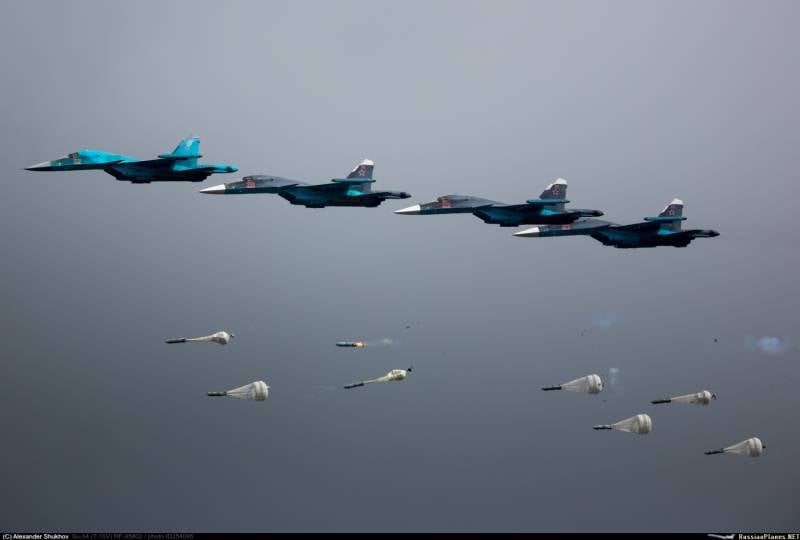
And then there would be no point in organizing a meat grinder in Artemovsk, because the same and even significantly greater losses could be inflicted on the enemy by isolating the locations of the Ukrainian Armed Forces brigades from the air. There is no doubt that the time frame for carrying out the SVO would have been much shorter in this case, and the losses of the Russian Armed Forces, PMCs and volunteers would have been significantly less than the current ones.
Well, with what we have - the Russian army is forced to fight with the Ukrainian Armed Forces “wall to wall”, one systemic force against another. The Americans achieved rapid success during the ground phase of Operation Desert Storm precisely because by the time it began, the combat vehicle of the Iraqi ground forces had been irreparably broken by the efforts of the air force of the multinational force. US ground forces did not defeat the Iraqi army - they only finished it off.
Therefore, in my opinion, the most important lessons of the Northern Military District today are the weakness of the reconnaissance component of our aerospace forces - in space and air, as well as the lack of specialized electronic warfare aircraft. Due to this, the Russian Aerospace Forces today show barely 10–15% of their real potential, and combat operations have reached a positional impasse of the First World War era.
Information